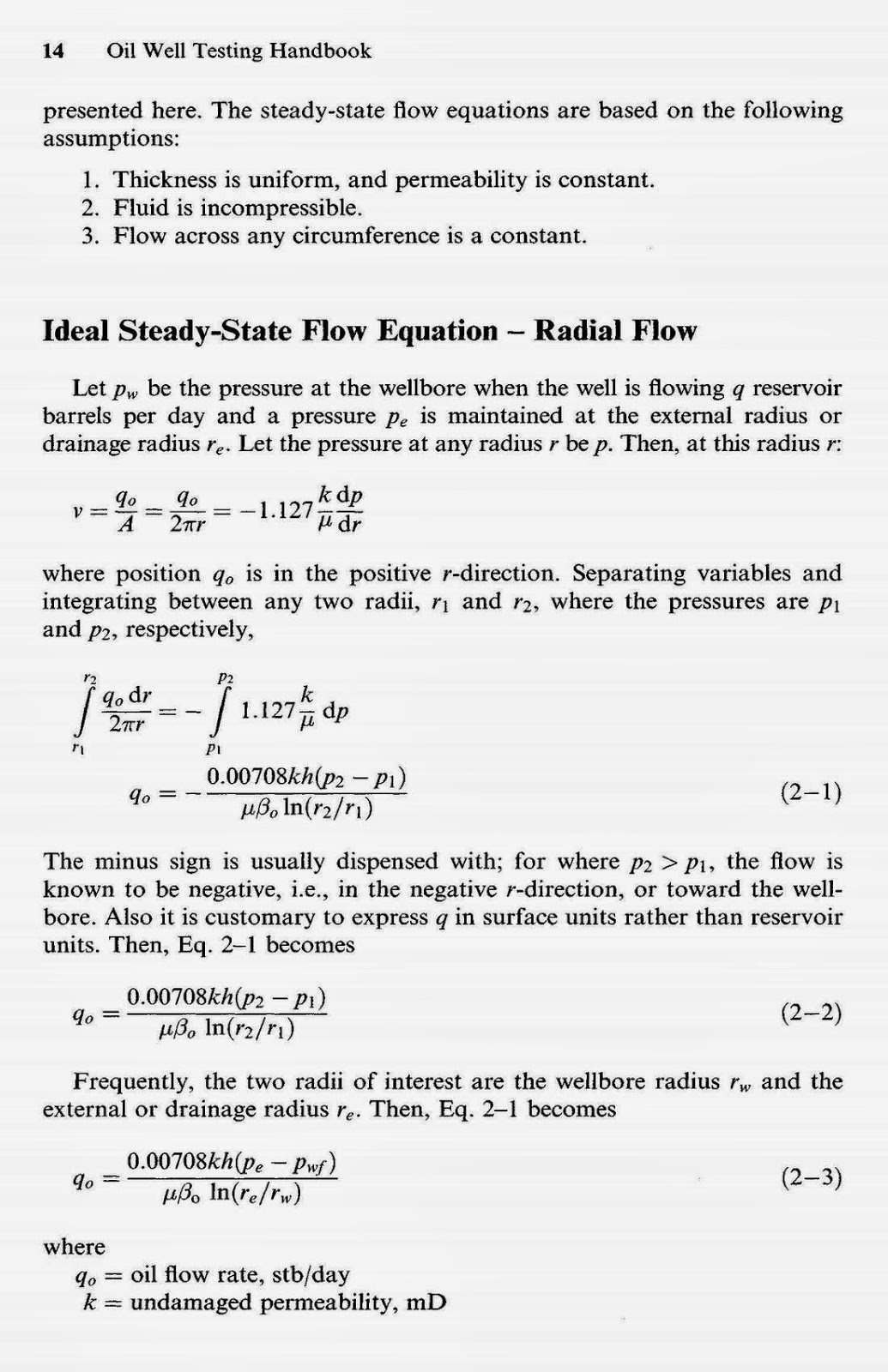- Title : Oil Well Testing Handbook by Amanat U. Chaudhry
- Publish : Advanced TWPSOM Petroleum Systems, Inc. Houston, Texas
- Type Document : pdf
- Release : December 2004
- Total Page : 700 Page
- Size : 17.08 Mb
Download Free by Netload : [ http://adf.ly/Xh9Go ]
Decrypted Contents
The major purpose of writing this book is to provide a practical reference source for knowledge regarding state-of-the-art oil well testing technology. The book presents the use of oil well testing techniques and analysis methods for the evaluation of well conditions and reservoir characteristics. All techniques and data described in this book are "field-tested" and are published here for the first time. For example, this book contains new tables and comparisons of the various methods of well test analysis. Most of these techniques and applications are clearly illustrated in worked examples of the actual field data. Several actual field example calculations and field case studies are included for illustration purposes.
This text is a must for reservoir engineers, simulation engineers, practicing petroleum engineers and professional geologists, geophysicists, and technical managers and helps engineering professors better acquaint their students with "real-life" solution problems. This instructive text includes practical worked examples that the readers should find easy to understand and reproduce.
Fundamental concepts related to well test data acquisition and interpretation are presented from a practical viewpoint. Furthermore, a brief summary of the advances in this area is presented. Emphasis is given to the most common interpretation methods used at present. The main emphasis is on practical solutions and field application. More than 129 field examples are presented to illustrate effective oil well testing practices, most analysis techniques and their applications.
Many solutions, which are presented, are based upon author's experience dealing with various well testing techniques and interpretation around the world. I am very thankful to the many companies with whom I had the opportunity to work in well test analysis for many years.
A properly designed, executed, and analyzed well test can provide information about formation permeability, reservoir initial or average pressure, sand-face condition (well damage or stimulation), volume of drainage area, boundary and discontinuities, reservoir heterogeneity, distance or extension of the fracture induced, validation of geological model, and system identification (type of reservoir and mathematical model).










